Should your home be flowery, just because your dress is?
It’s nearly July and dedicated fashionistas will be turning their attentions to Autumn & Winter’s styles; their Summer wardrobes picked out months ago. But does it follow that, to be truly in vogue, what’s hot on the High Street should be reflected in your home?
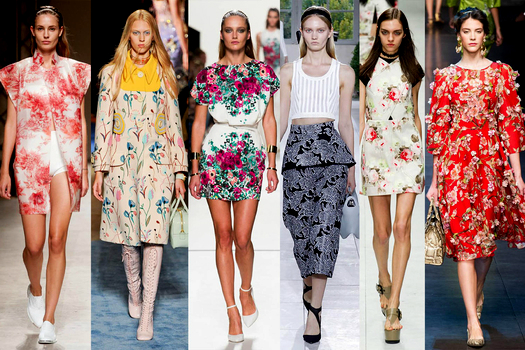
- Floral ‘14 – various designers interpret this year’s trend
A hallmark of Spring / Summer ’14 has been the rebirth of flower power; maybe not as brash as in its ‘60s heyday but, nevertheless, livelier than Jerry and Margot’s chaise longue! With floral patterns set to continue through Autumn & Winter, does your home décor need to echo that flowery dress?
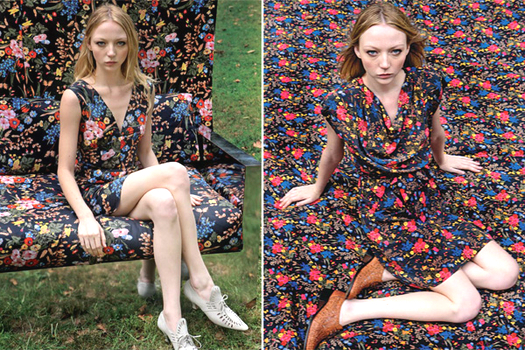
- Should interior design mimic clothing styles?
Perhaps the main difference between interiors and clothing is the fleeting nature of sartorial style. Before the High Street has a chance to catch up, leading designers have moved on to next season’s looks. We do our best to keep our wardrobes in check, but to extend that through the home would be a major undertaking – both practically and financially.
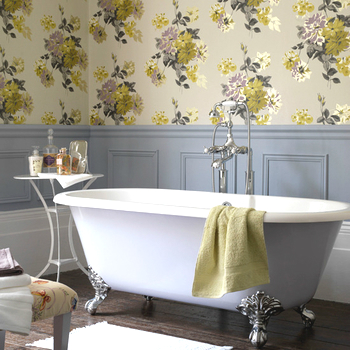
- This bathroom design reflects current pastel and floral trends
Clothes and interiors do share a similar function though. We dress ourselves and our homes as an expression of our personality. We’re unlikely to wear something that feels uncomfortable, just as we might not choose to paint our walls neon yellow – even if it was the season’s colour.
Clothing designers present a collection of styles, from which we select the elements that suit us best. A three quarter length coat might drown a petite frame, but its monochrome colour scheme could be just your cup of tea.
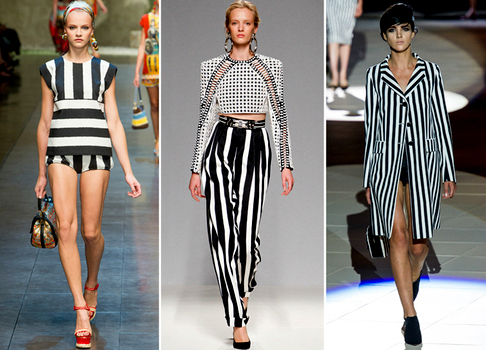
- Various uses of monochrome – it’s not all black and white!
Good design always suits its era. ‘40s and ‘50s styles were built around post-war austerity, innocence and traditionalism. Modest wooden furniture and window blinds characterised interiors, while clothes were utilitarian, simple, and chic.
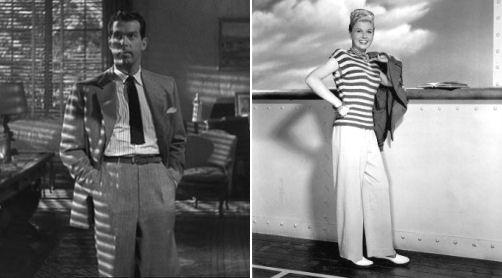
- Film stars, Fred MacMurray and Doris Day, demonstrate simple 1940’s elegance
Designers in the ‘60s were pushing boundaries – colours and shapes were brighter and bolder, and the materials used were at the forefront of technology. People were excited about space travel and psychedelics, and metals and plastics were used in futuristic ways. At the same time, the hippy movement took us back to the earth, with flowers and natural materials the order of the day.
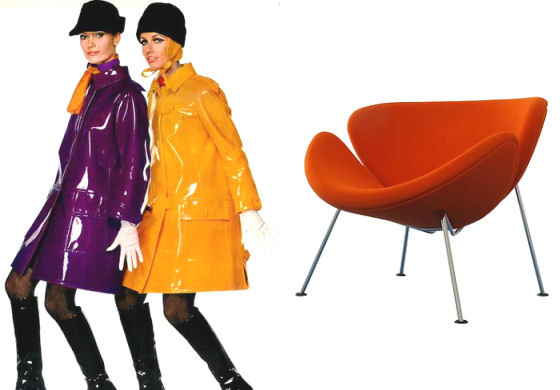
- 1960s style experiments with colour, shape, texture, and materials. Rama CC-BY-SA-2.0-fr (http://creativecommons.org/licenses/by-sa/2.0/fr/deed.en), via Wikimedia Commons
The ‘70s maintained this split personality. Experimentation was taken to overblown proportions, but equally balanced by subtle, Scandinavian minimalism.
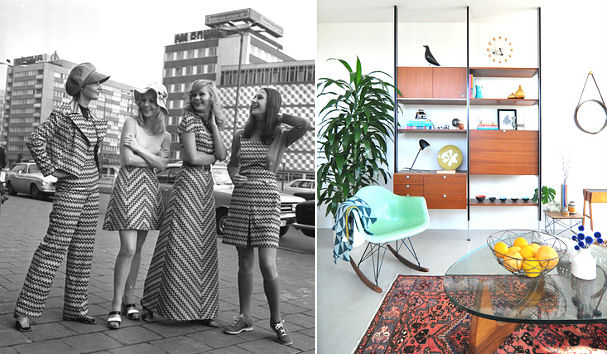
- The bold patterns worn by these models in the early 70s were at odds with the restrained minimalism of this Scandinavian interior design. Bundesarchiv, Bild 183-L0902-114 / Ulrich Häßler / CC-BY-SA 3.0-de (http://creativecommons.org/licenses/by-sa/3.0/de/deed.en), via Wikimedia Commons
The number of styles covered over these few decades show how quickly fashion develops from one trend to the next; the constantly changing seasons only helping to spur it on.
Interior design changes at a naturally slower pace. It’s like a go-to outfit that you change-up by varying its accessories. Imagine deciding on an outfit that you had to wear for the foreseeable future. The same kind of thought is involved in designing interiors but, fortunately, we can turn to stylists who are in tune with the zeitgeist!
Trends are a great thing for keeping us on our toes, but it’s what we choose to do with them that truly shows personality – and makes fashion and interiors such an exciting area of work.
With thanks to
www.interiorgoodsdirect.com
for this guest blog
